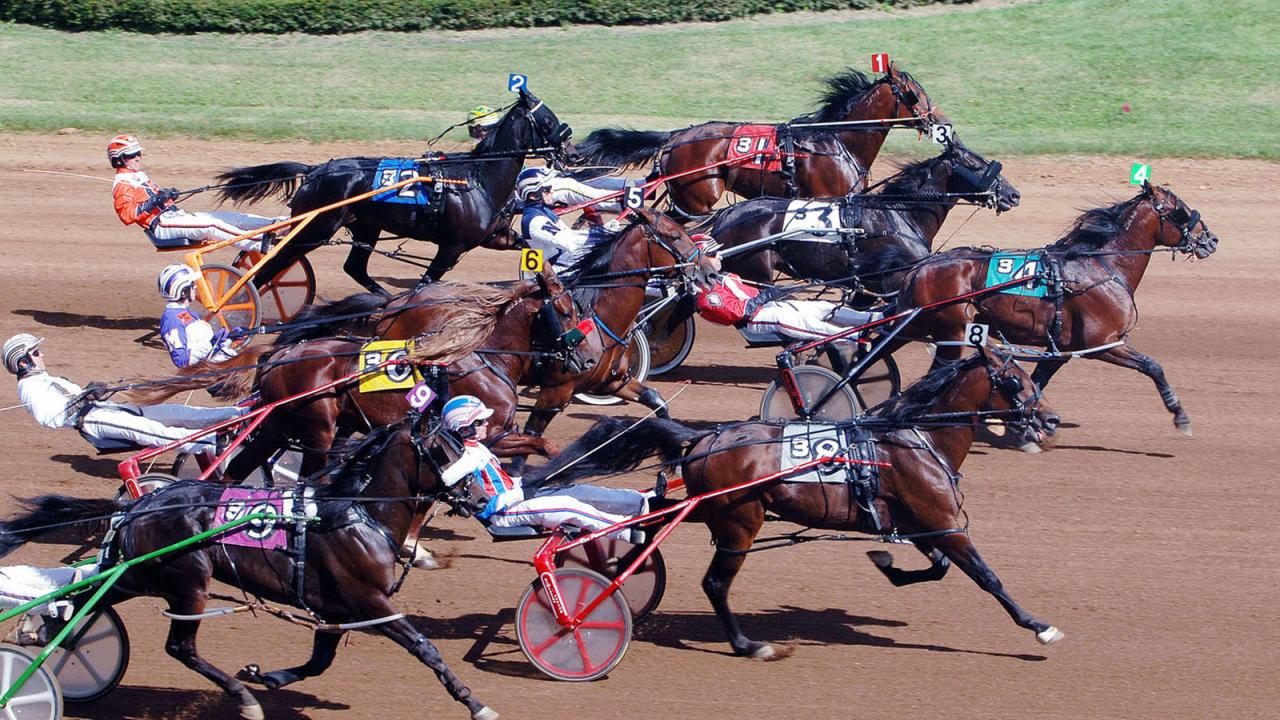
VGL Researchers Investigate Genetic Diversity of Standardbred Horses
The study done by researchers at the Veterinary Genetics Laboratory (VGL) provide a baseline for assessing and managing genetic diversity in the American Standardbred horse. The American Standardbred was selectively bred for harness racing and, today, there are two gaits that these horses race at: the trot and the pace. The trot is a two-beat diagonal gait whereas the pace is a two-beat lateral gate.
The United States Trotting Association (USTA) was established in the late 1930’s as the breed organization that governed the American Standardbred. In 1973 the studbook was closed, meaning only offspring of already registered American Standardbreds could be registered in the USTA from then on. Closing of a studbook can contribute to loss of genetic diversity because it limits new genetic variants from being introduced into the breed’s gene pool. With concerns regarding the loss in genetic diversity and risk for increasing the frequency of recessive disorders, in 2009, the USTA implemented a studbook size cap that limited the number of mares covered by stallions per year. However, it was unknown if this studbook cap helped to maintain diversity within the breed.
Under mentorship of the VGL director, Dr. Rebecca Bellone, and researcher Dr. Felipe Avila, VGL masters student Elizabeth Esdaile aimed to investigate the level of genetic diversity in Standardbred horses over a six year period following the implementation of this studbook cap.
We are thrilled to be working with the United States Trotting Association to better understand genetic diversity in this breed. These data provide a framework with which to compare data across generations in the American Standardbred and a reference with which to develop tools that can help breeders maintain or redistribute diversity in future generations” Dr. Rebecca Bellone, director, UC Davis VGL.
The study used genetic markers (short tandem repeats) from over 50,000 individuals, including all horses foaled between 2010 and 2015, their sires and dams, to assess genetic diversity in the breed. The results showed that, by several different measures, genetic diversity of trotters and pacers had mostly been maintained since the introduction of book size caps, although it appears that the mares have been the ones maintaining genetic diversity of the breed. This study also showed moderate levels of genetic differentiation between pacers and trotters, suggesting that gene flow between these two subpopulations is limited.
In evaluating a subset of the trotting lines and using nearly 112,000 genetic markers (known as single nucleotide polymorphism or SNPs), this study also found reduced heterozygosity (one of the measures evaluated for diversity) was evident in the offspring when compared to the sires, highlighting the importance of further monitoring of diversity metrics over a longer period of time.
The study provides a baseline for future assessments of genetic diversity in Standardbreds and demonstrates the importance of careful monitoring of breeding practices and genetics to avoid loss of genetic diversity in the breed.
The United States Trotting Association takes great pride in the advancement as well as preservation of our equine athletes. Through our strong commitment with Dr. Bellone and her team, the entire standardbred breed will continue to flourish at the highest of levels, through this genomic exploration” T.C. Lane, Chief Operating Officer, U.S. Trotting Association
This study was performed as part of Elizabeth’s Masters thesis. To hear more about her experience in research, please see the “Meet the Scientist” side bar.
The study was funded by the United States Trotting Association (USTA)
Read the full publication here.
The genetic markers used in this study are available through the VGL’s parentage/genetic marker test: https://vgl.ucdavis.edu/test/parentage-genetic-marker-report-horse
